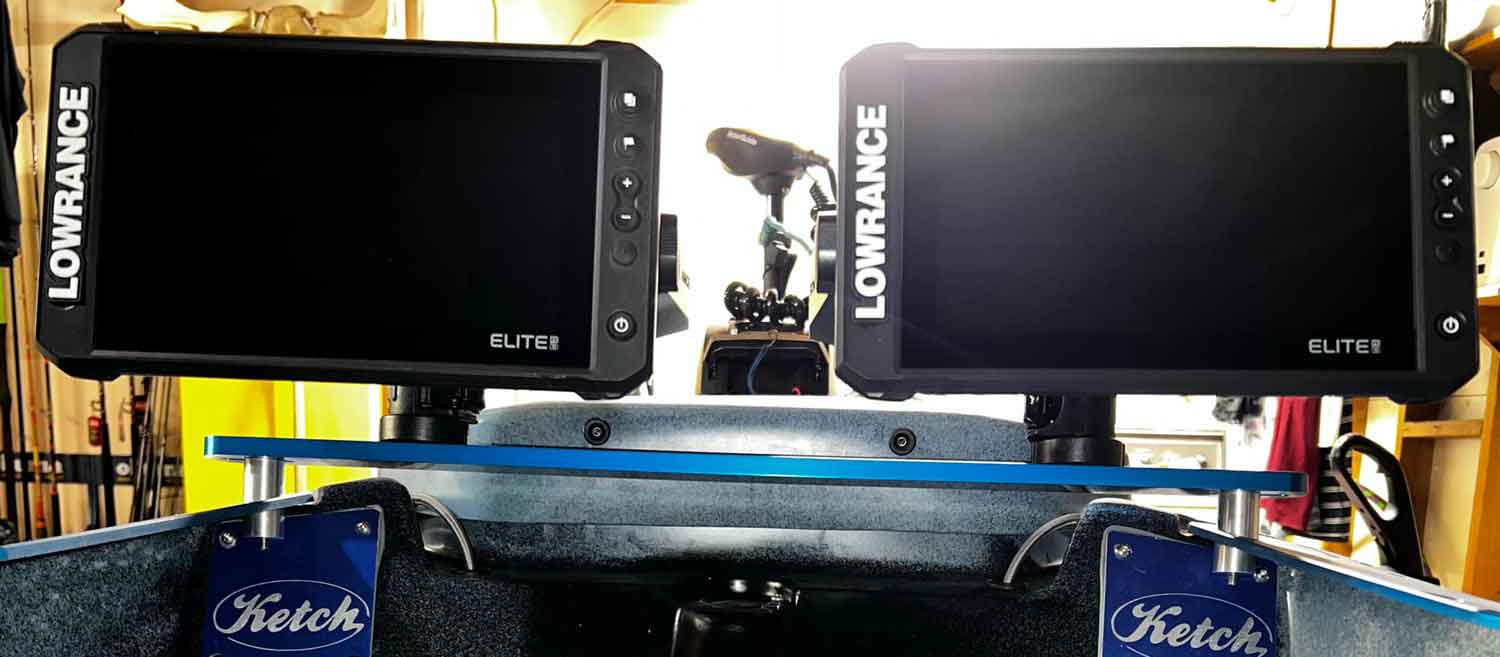
Ultimate Guide: Kayak Fishing Dual Graph Mounts, Dashboards and Crossbars
Best Practices for Mounting Dual and Large Graphs on your fishing kayak
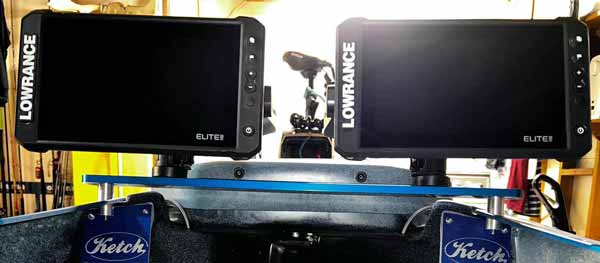
Hobie® PA 14 Kayak with Ketch Krossbar and Dual Fish Finders
Table of Contents:
- Introduction
- The Rise of Dual Graph Setups and large screens in kayak fishing
- Challenges of mounting dual graphs on kayaks
- Innovative Mounting Solutions for Kayak Dual Graph Setups
- Ketch Krossbar Systems
- X-Aktrak Risers and Spacers
- Custom Fabricated Dashboards
- Adjustable Arm Systems
- Integrating Advanced Fish Finder Technologies
- Conclusion
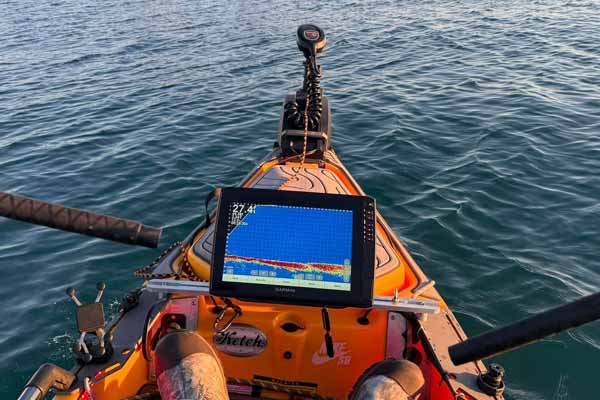
Large Single Graph mounted on a Ketch Krossbar
1. Introduction
The evolution of kayak fishing technology has led to significant advancements in fish finder capabilities and mounting solutions. This comprehensive analysis will explore the trends, challenges, and innovations in mounting dual graph setups and large screens on kayaks, with a focus on popular solutions like the Ketch Krossbar, X-aktrak risers, and spacers, as well as custom dashboards. No matter what you call them, crossbars, dashboards, or a captain’s bridge, these various mounts spanning from one side of the kayak to the other in front of the angler that allow for mounting dual graphs are becoming more and more popular as kayak anglers dip into the world of dual fish finders and larger screens for them.
The Rise of Dual Graph Setups and Large Screens in Kayak Fishing
The kayak fishing community has witnessed a notable shift towards larger fish finder screens and dual-graph setups in recent years. This trend is driven by anglers’ desire for more detailed and easily readable information while on the water. Larger screens, often 9 to 12 inches, provide crisp, clear images that can be easily seen even in challenging light conditions. They also allow for split-screen views, enabling anglers to monitor multiple types of data simultaneously.
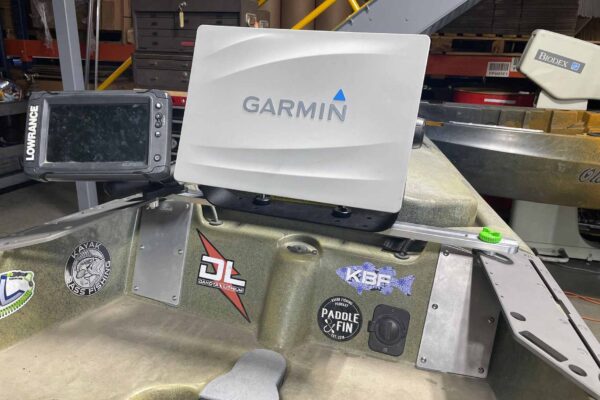
Dual Graphs mounted on Ketch Krossbar on Hobie® Pro Angler 14 kayak.
Dual-graph setups have gained popularity as they offer unparalleled versatility. With two separate screens, anglers can dedicate one display to traditional sonar and another to side-imaging or down-imaging. This configuration allows for a more comprehensive view of the underwater environment, making it easier to locate fish and understand bottom structure. Some anglers dedicate one screen to forward facing sonar to make sure that it’s as large as possible on the screen to be able to pick out individual fish and see their bait moving in real time, while using the other screen for more traditional views like GPS Mapping and Side Scan.

Rear View of Hobie Pro Angler Kayak with Ketch Jake Plates and Krossbar holding dual graphs
The adoption of larger screens and dual-graph setups has also been influenced by advancements in fish finder technology. Modern units offer higher resolution displays and more powerful processors, capable of rendering complex sonar data in real-time. This improved performance justifies the use of larger screens, as anglers can now take full advantage of the detailed information provided by their devices.
Challenges of Mounting Dual Graphs on Kayaks
Mounting large or dual fish finder graphs on a kayak presents several unique challenges. The primary issue is the limited space available on most kayaks. Unlike larger boats, kayaks typically have a small cockpit area and limited flat surfaces suitable for mounting electronics. This constraint requires careful planning and often creative solutions to position fish finders where they are both visible and accessible without interfering with paddling or fishing activities.
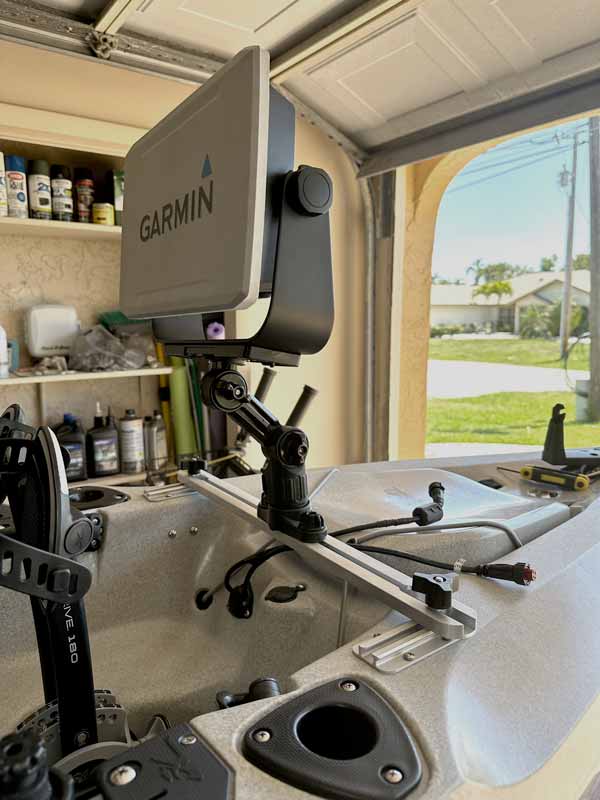
Ketch Krossbar added to Hobie Kayak
Another significant challenge is maintaining the kayak’s balance and stability. While Fish finders themselves are not that heavy, adding the batteries to power them can add weight to the vessel, and if not positioned correctly, can affect the kayak’s handling characteristics. Anglers must consider weight distribution when planning their setup, ensuring that the addition of electronics doesn’t compromise the kayak’s performance or safety on the water.

Dakota Lithium Battery Installed in Kayak
The power requirements of larger and dual fish finder setups also present a challenge in the limited space of a kayak. These devices often require larger batteries or multiple power sources, which need to be securely stored and protected from water. Integrating a robust power system that can support extended use of these electronics while maintaining the kayak’s weight distribution and storage capacity requires careful consideration and often innovative solutions.
Furthermore, the increased complexity of these setups can lead to issues with cable management. Multiple screens and additional features mean more wires, which need to be routed and secured in a way that prevents tangling, reduces clutter, and protects them from damage. This often requires creative use of existing kayak features or the addition of custom cable management solutions, further complicating the mounting process.
2. Innovative Mounting Solutions for Kayak Dual Graph Setups
To address the challenges of mounting dual graph setups on kayaks, several innovative solutions have emerged. These mounting systems aim to provide stability, flexibility, and efficient use of limited space. Unfortunately for some, not every kayak has the space for a dual graph mount, but many of the most popular fishing kayaks are ready for a dashboard to be added right from the factory.
Ketch Krossbar Systems
One of the most popular solutions for mounting dual graph setups on kayaks is the Ketch Krossbar. The Ketch Krossbar is an accessory mount crossbar that offers significant mounting options for fish finders, graphs, and other kayak fishing accessories. This versatile system comes in various lengths providing a wider range of kayaks that can accept a crossbar while providing ample space for various configurations.

Ketch Krossbar on Bonafide PWR129 Kayak
Key features of the Ketch Krossbar system include:
- Versatility: The Ketch Krossbar is compatible with a wide range of kayak models, including the Hobie PA 12 and 14 Series. It can be mounted directly into gear tracks on the kayak or attached using additional mounting hardware for kayaks without built-in tracks. Ketch X-Aktrak HD is a great solution for adding extra track to mount your Krossbar onto for those kayaks that don’t have tracks or that have track but not where the Krossbar would be mounted.
- Multiple Lengths: Ketch Krossbars are anodized aluminum for not just a durable finish, but gives you the option to choose from a variety of colors to match your kayak. Ketch Krossbars also come in different sizes to accommodate various kayak widths and mounting preferences. For example, the 22″ Krossbar fits the popular Hobie® Pro Angler 12 kayak, and the 26″ Krossbar fits the Hobie PA 14, NuCanoe® Unlimited, and Bonfide® SS127 kayaks. They have several other sizes and there are illustrations showing the minimum and maximum measurements for the mounting points so that you can determine with one if any will fit your kayak.
- Customizable setup: Ketch also offers additional Risers, in 2 inch and 4 inch, so that you can raise your Krossbar higher, and Spacers, in 1/2 inch and 1 inch, to bring the graph mounts or other accessories higher above the Krossbar itself to get the most convenient and efficient arrangement for your needs.
- Rigidity: Ketch Krossbars are designed to give the most solid mounting options for heavy or dual fish finders. On a Hobie Pro Angler Kayak for example, when using the entire system from Ketch you have a set of Ketch Jake Plates, Hobie Adapters, and the Krossbar, all of which are aluminum and engineered to exactly work together to provide super rigid mounting for your heavy or dual graphs. Rigidity provides more protection for your expensive graphs and equipment. A stable, rigid mount protects expensive fish finders and other electronics from damage due to movement or impacts during transporting and kayaking.
- Flexibility: Many Krossbar systems allow for easy adjustment and repositioning of mounted devices, enabling anglers to optimize their setup based on fishing conditions or personal preferences. Anything accessories that mount on T-Track can be added to a crossbar, while dual graph mounts are popular there are lots of other ways they can be used. Mounting lights on your kayak for bowfishing for example would be an excellent application other than mounting graphs.
When choosing a Krossbar system like the Ketch Krossbar, anglers should consider factors such as their kayak’s mounting width, the size of their fish finder screens, and their specific mounting requirements. For example, dual monitors over 9 inches may require a larger Krossbar to provide adequate space and stability. Not all kayaks can accept a Krossbar, but Ketch offers a wide variety of lengths to accommodate many different kayak brands/models.
X-Aktrak Risers and Spacers
To enhance the functionality of the Ketch Krossbar, anglers can utilize X-Aktrak risers and spacers. These accessories are designed to provide additional height and clearance, making it easier to mount fish finders and other electronics on kayaks with varying deck configurations. Risers bring the whole Krossbar higher, while spacers bring your accessories mounted on the Krossbar up to a higher level.

Ketch X-Aktrak 2″ and 4″ Risers
Advantages of X-Aktrak risers and spacers include:
- Height adjustment: Risers allow anglers to raise their Krossbar to a more comfortable viewing height, improving visibility and accessibility of mounted devices. Spacers let you bring the position of your Graphs or other accessories above the Krossbar for greater visibility or clearance. Risers and Spacers can also be used to bring items above your Ketch X-Aktrak Heavy Duty T-Tracks which are available in lengths from 2″ to 18″ to mount on kayaks that don’t have existing track or those that don’t have track where you need it. Two 6″ X-Aktrak HD mounted on a kayak without tracks that has a nice flat surface for them can be used to mount a Ketch Krossbar when it might not be possible given the stock configuration.
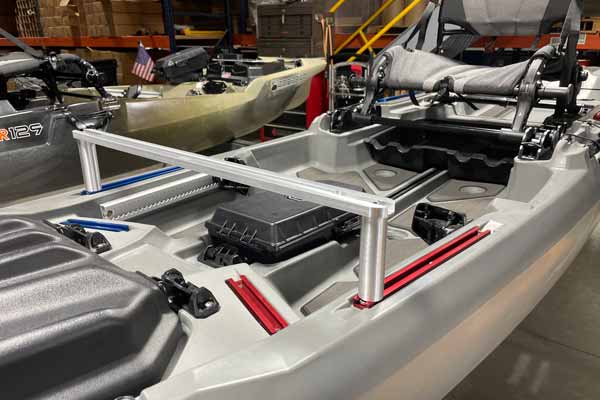
Ketch 4″ Risers and Krossbar mounted on Bonafide Kayak
- Compatibility: X-Aktrak risers and spacers are keyed to nest with the HD X-Aktrak T track series, ensuring a secure and stable fit. Risers fit exactly into Ketch X-Aktrak HD and most existing t-tracks. Spacers are designed to fit into most t-tracks as well, but fit exactly into both Ketch X-Aktrak HD and Ketch Krossbars.
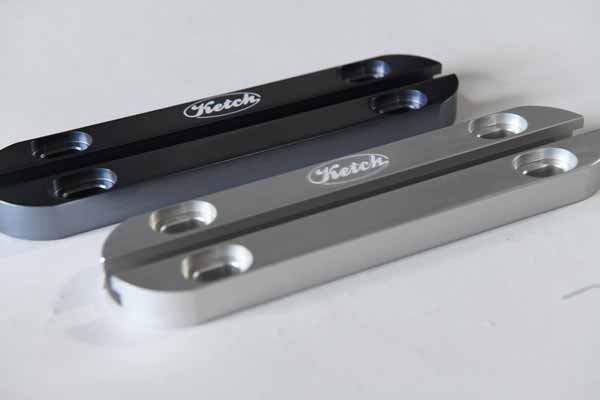
Ketch X-Aktrak HD 6″ in Gunmetal Gray and Clear Anodized Aluminum
- Customization: Available in different sizes, Spacers are available in 1/2 inch and 1 inch models, and Risers come in 2 inch and 4 inch options. These accessories along with the Krossbar provide flexibility in creating a personalized mounting solution that is compatible with many different kayaks on the market. Spacers can also be stacked, for example if you wanted to bring your graphs up 1 1/2″ above the Krossbar you could stack a 1″ and 1/2″ riser to get that exact height.
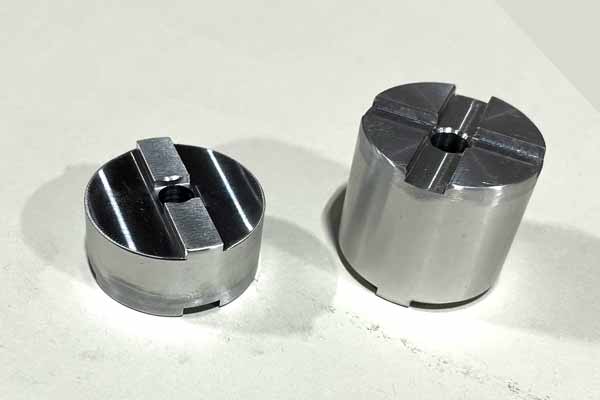
Ketch 1/2″ and 1″ X-Aktrak Spacers
- Durability: Made from 6061 aluminum, X-Aktrak risers and spacers are built to withstand the rigors of kayak fishing, offering long-lasting performance and meshing perfectly with the Ketch Krossbars.
When integrating X-Aktrak risers and spacers into a kayak dual graph mount setup, anglers should consider the desired height and clearance for their specific kayak model and fishing style. Proper installation ensures that the fish finders are positioned optimally for both visibility and ease of use. Risers require a flat surface, so keep that in mind when considering those for use on your kayak. Some kayak models such as the Hobie PA12 and PA14 have angles that prevent them from using Risers, but for the PA series they offer an adapter kit to make your Krossbar level and ready for your fish finders.
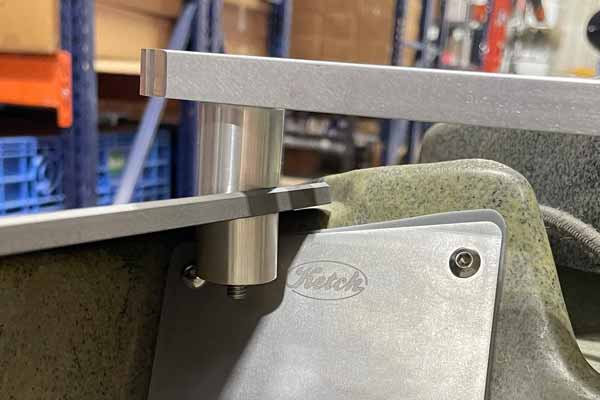
Ketch Jake Plates, Adapter Kit and Krossbar for Hobie PA series kayaks
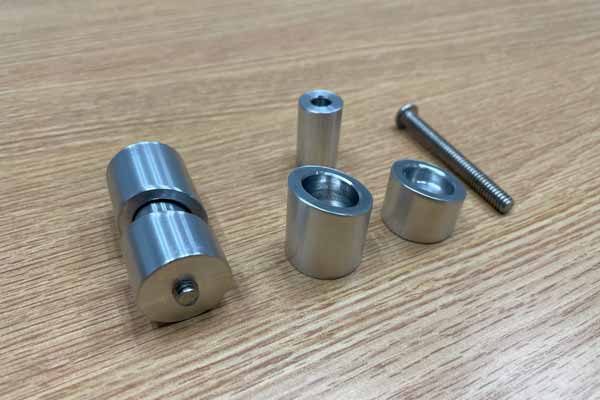
Ketch Krossbar Adapter Kit for Hobie Pro Angler Kayaks
Custom Fabricated Dashboards
Custom fabricated dashboards represent a more personalized approach to mounting fish finders on kayaks. These are typically made from materials like marine-grade plywood, starboard, or even 3D-printed plastics. Custom dashboards allow anglers to create a mounting solution that perfectly fits their kayak model and personal preferences, accommodating not just fish finders but often other electronics like VHF radios.
Advantages of custom kayak dashboards include:
- Space efficiency: By designing a dashboard specifically for their kayak and equipment, anglers can ensure that every inch of available space is used effectively.
- Integrated look: Depending on the ability of the creator, custom solutions can result in a more personalized appearance than off-the-shelf options.
- Enhanced protection: Custom dashboards can be designed to provide better protection for electronics, incorporating features like splash guards or sun shades.
- Ergonomic design: Anglers can position controls and displays at optimal angles and distances for comfortable use during long fishing sessions.
- Future-proofing: Custom dashboards can be designed with expansion in mind, allowing for the addition of new devices or upgrades in the future.
When creating a custom dashboard for a kayak dual graph mount, anglers should consider factors such as weight distribution, waterproofing, and ease of access to controls and ports. It’s also important to ensure that the dashboard doesn’t interfere with essential kayaking activities or safety features.
Adjustable Arm Systems

Fish Finder mounted on Adjustable Arm on Ketch Krossbar
Adjustable arm systems offer a flexible solution for mounting fish finders on kayaks. These typically consist of a base that attaches to the kayak and an articulating arm that can be positioned in various ways. The arm usually terminates in a mount that can accommodate different sizes of fish finders.
Benefits of adjustable arm systems for kayak dual graph mounts include:
- Adaptability: They can be quickly repositioned based on fishing conditions, sun glare, or personal preference.
- Easy removal: Many adjustable arms allow for easy removal of the fish finder, which is convenient for security when transporting the kayak or for using the device on multiple vessels.
- Versatility for different fishing positions: The ability to quickly reposition the fish finder ensures optimal visibility whether the angler is sitting or standing. Often these types of mounts are used on either the left or right side of the kayak instead of in the dashboard configuration in front of the angler.
When selecting an adjustable arm system for a dual graph setup, anglers should consider the weight capacity of the arm, the range of motion it offers, and its compatibility with their specific kayak model and fish finder units. One popular brand that offers adjustable arm type mounts is the RAM brand.
Rail-Mounted Options
Rail-mounted options for fish finders are becoming increasingly popular, especially on kayaks that come equipped with built-in rails or those that have aftermarket rails installed. These mounting systems typically clamp onto the rail and provide a secure platform for attaching fish finders. The most common rail is the H-Rail on Hobie Kayaks such as their Pro Angler series.
Advantages of rail-mounted options for kayak dual graph setups include:
- Easy installation and removal: Most can be attached or detached without tools, making it simple to set up or break down the fishing rig.
- Flexibility in positioning: Depending on the kayak’s rail configuration, anglers can often choose to mount their fish finders in various locations.
- Compatibility with other accessories: Many manufacturers offer compatible add-ons such as rod holders or camera mounts that can be easily attached to the same rail system.
- Adjustability: Rail mounts often allow for some degree of rotation or tilt, helping to optimize screen visibility in different light conditions.
When considering rail-mounted options for a dual graph setup, anglers should ensure that their kayak’s rails are sturdy enough to support the weight of multiple devices and that the mounting system is compatible with their specific rail design.
Ketch offers an add on that expands the usability of H-Rail by adding a piece of 2 to 18 inch X-Aktrak on top of or on either side of the H-Rail expanding the usable space and letting you mount anything that fits in a track mount instead of needing specialty designs for H-Rail Mounting. All you need is the appropriate number of Ketch X-Aktrak H-Rail Adapters and then your X-Aktrak HD heavy duty t-track and you’ll have a solid platform to mount heavier items such as rod holders and even downriggers.
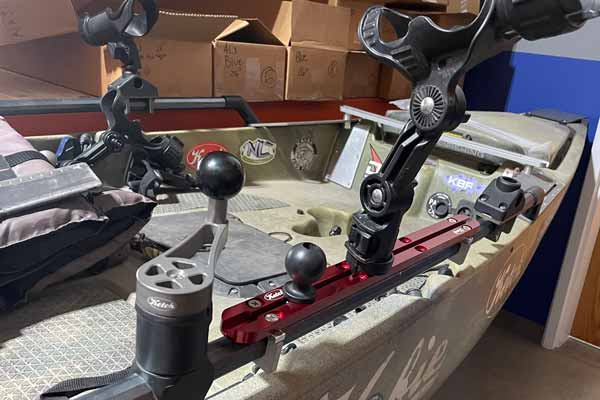
Ketch H-Rail Adapters with 18″ X-Aktrak HD with accessories mounted
3. Integrating Advanced Fish Finder Technologies
As fish finder technology continues to advance, kayak anglers are finding innovative ways to integrate these powerful tools into their limited space. One significant development is the addition of forward-facing sonar. This advanced feature allows anglers to see fish and structure in real-time, and even to track individual fish as they move in front of the kayak.
The integration of forward-facing sonar presents new challenges in terms of mounting and power requirements. These units often require a separate transducer and display, adding to the complexity of the setup. Kayak anglers are now tasked with finding creative ways to mount multiple screens and transducers while maintaining the balance and functionality of their vessel.
When designing a mounting solution for a kayak dual graph setup that includes forward-facing sonar, anglers should consider:
- Transducer placement: The forward-facing transducer needs to be mounted in a position that provides a clear view ahead of the kayak without interfering with paddling or pedaling.
- Additional power requirements: Forward-facing sonar often requires more power, necessitating larger batteries or additional power management solutions.
- Screen positioning: With multiple screens, it’s crucial to position each display for optimal visibility and ease of use without cluttering the cockpit area.
- Cable management: The additional wiring required for forward-facing sonar needs to be carefully routed and secured to prevent tangling and water exposure.
4. Conclusion
The trend towards larger screens and dual-graph setups in kayak fishing reflects the sport’s growing sophistication and the increasing capabilities of modern fish finders. Solutions like the Ketch Krossbar, X-aktrak risers and spacers, custom dashboards, adjustable arms, and rail-mounted systems offer anglers a range of options for integrating these advanced electronics into their kayaks.
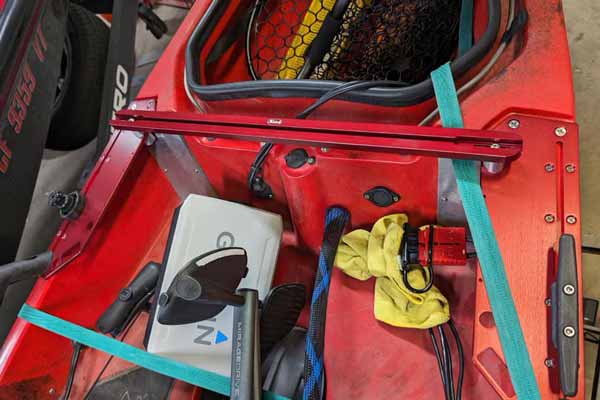
Ketch Krossbar on Hobie Pro Angler Kayak
Each mounting solution has its own set of advantages and considerations, and the best choice will depend on factors such as the specific kayak model, the type and size of fish finders being used, and the angler’s personal preferences and fishing style. As kayak fishing technology continues to evolve, we can expect to see further innovations in mounting solutions that address the unique challenges of integrating complex electronics into the limited space of a kayak.
Ultimately, the goal of any kayak dual graph mount setup is to enhance the angling experience by providing easy access to crucial information while maintaining the kayak’s performance and the angler’s comfort. By carefully considering the available options and planning their setup, kayak anglers can create a highly efficient and effective fishing platform that takes full advantage of modern fish finder technology.
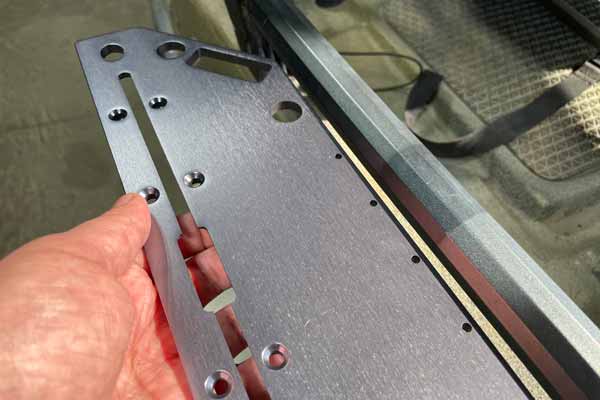
Ketch Jake Plates for Hobie PA Series Kayaks
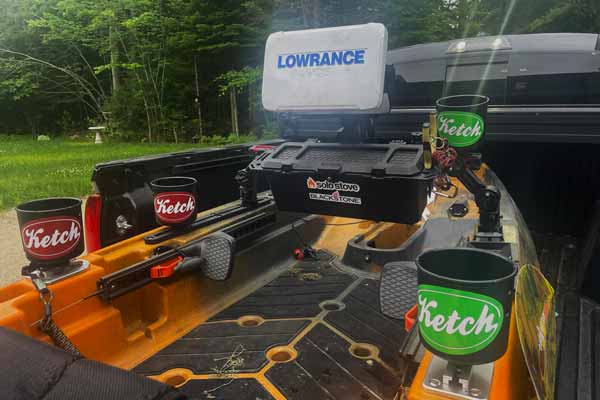
Example of a Custom Made Dashboard, mounted to an Old Town® Kayak on Ketch X-Aktrak OT-1 tracks
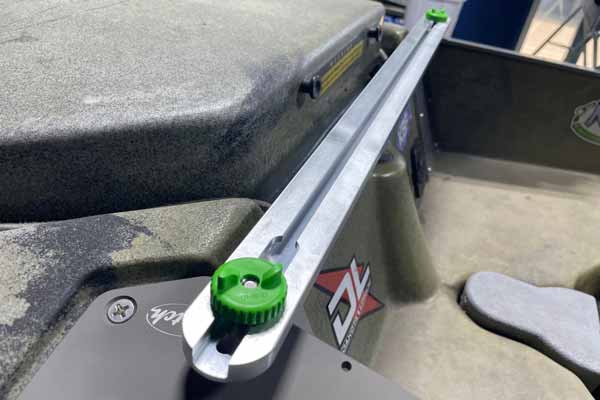
Ketch Krossbar attached with Du-Bro Twister Track Knobs

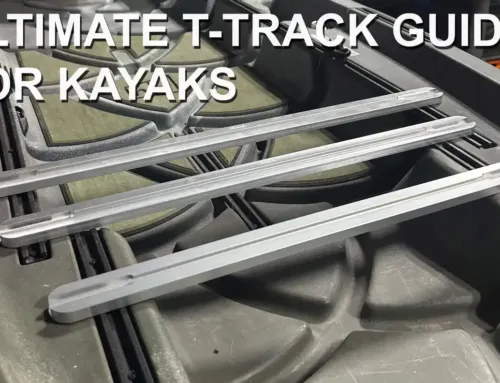
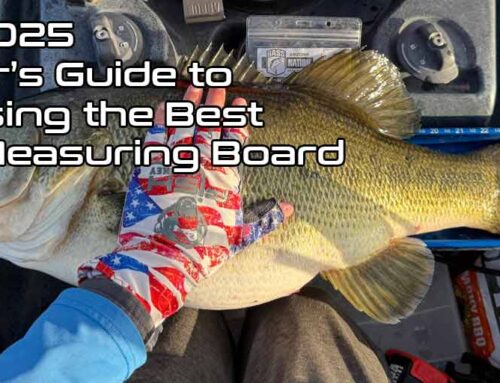

when will you have these in stock?
Hi Keith, this article covers a lot of products, what are you asking about specifically?